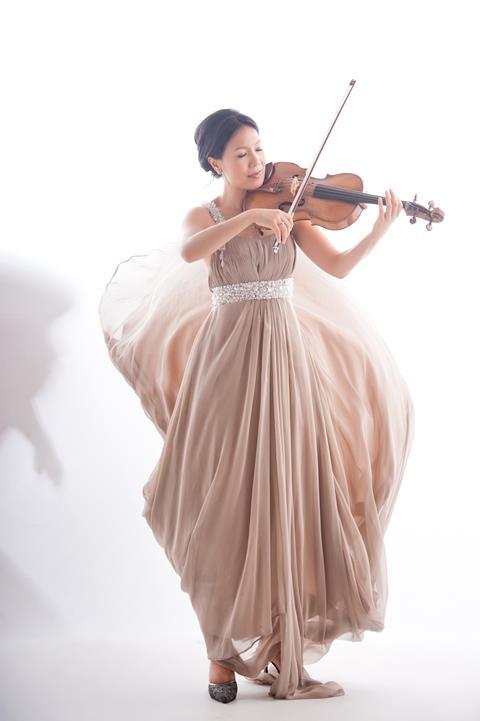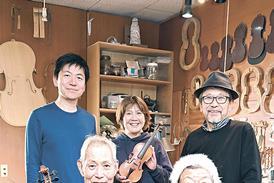The violist’s new album VivaViola showcases the instrument in its ability to tell stories, connect people and cultures, as well as provide solace during trying times

Discover more Featured Stories like this in The Strad Playing Hub
’Have the patience with all that is unresolved in your heart and try to love the questions themselves, like closed rooms, like books written in a foreign language’ - Rainer Maria Rilke
All my life I have lived with the question: why the viola? When I began at age ten it was simply a way to help my school’s orchestra; at age 16 it led me to fall in love feverishly with quartets of Haydn, Mozart, Beethoven while also falling in love with lifelong friends. In my 30s and 40s, I was in the midst of raising a family alongside raising young violists. Now at age 50, I feel ever more like a student, a kind of archeologist of my own life, looking both inward and forward. My desire is to use the viola as storyteller, a bridge to connect people and cultures, a medium to serve music as medicine.
In the classical music world, the viola rose to the spotlight very gradually. Violists are forever searching for more music in the Classical and Romantic genres. One silver lining of the recent pandemic was being able to explore repertoire which I hope can become tomorrow’s viola classics. The best composers loved the instrument even if the body of work was slim. Take, for example, Bach’s sixth Brandenburg Concerto, where his love for the viola is doubled, depicting an intimate relationship where you can not tell one apart from the other. In Mozart’s ’Kegelstatt’ Trio and his viola quintets, the viola is heard as an equal partner in dialogue with the other instruments. In Brahms’s quartets and last sonatas, the viola stands on its own to be heard fully as a solo instrument, and in Dvořák’s Viola Quintet the celebratory party is elevated over the brim via two solo viola voices (the second viola part is even better than the first!). Paul Hindemith emulated Paganini’s service to the violin, expanding the definition of virtuosity on the viola and never apologising for the instrument. In his wake, Shostakovich, Bartók, Ligeti, George Benjamin and now countless contemporary composers were inspired by viola superstars.
In our time, violist-composers have drawn upon their natural expertise to write brilliantly for the instrument. Other than Hindemith, there are Garth Knox, Kenji Bunch, Brett Dean and Atar Arad, to name a few; each of them in their own way challenge players by reinventing their own technique — Garth Knox adapted the sideways bow chop with a folksy language that grooves, Kenji Bunch used scordatura on multiple strings as to add more resonance and possibilities to the overall sonority while staying true to his multicultural Americanism, Brett Dean revels in high positions and even using props to create a new sound – witness the paper clip on the bridge – and is a standard-bearer of the highly intellectual language of central Europe. Atar Arad drew inspiration from our core repertoire to spin out twelve humorous and delightful caprices; often augmenting just a fleeting thought, they are ingeniously inventive. These composers have taken the viola to a new height with such imagination and creativity.
My album VivaViola is an accidental combination of efforts. Chief among them is my wish to offer music as medicine; medicine that can heal and inspire a smile. Erich Korngold’s Much Ado About Nothing provides a guilty pleasure in the best possible sense, like what Kreisler’s music might offer – the romanticism here is something violists crave, from guttural growls to soaring gestures. Berg’s Four Pieces, opus 5 were beautifully arranged by the late Roger Tapping, an exquisite stepping stone for students to explore more significant Second Viennese School chamber music. Despite the miniature movements, each tells a story that is epic in its essence; our sense of time and space are turned inside out and stand still. The Dvořák Folktone, op. 73, a collection of deeply spiritual offerings, reveals the viola’s secret weapon: the ability to yearn and cry as a human voice. Of course the Beethoven Cello Sonata, opus 102 no. 2, needs no reason or excuse. It is Beethoven! In this last sonata for the cello, Beethoven celebrates the upper range of the cello, which suits the viola particularly well. The heart of the sonata is the extraordinary middle movement which expresses such profound grief beyond the power of words, on a level with the Cavatina or the final movement of the opus 111 Piano Sonata.
VivaViola’s mission is, first and foremost, to celebrate humanity through the viola. Our arrangements allow viola ensembles to serve music spiritually. Each chapter under the VivaViola umbrella hopes to bridge the disconnect — humans to nature, East to West, individuals to society. In a spirit of collaboration, VivaViola exists thanks to The Foundation of Chinese Performing Art for their unwavering support, and the global viola community for its continuous inspiration.
Read: Technique: Playing the viola with a small frame
Read: Exploring Bartók’s Viola Concerto: Yuri Zhislin
Read more Featured Stories like this in The Strad Playing Hub
The number one source for playing and teaching books, guides, CDs, calendars and back issues of the magazine.
In The Best of Technique you’ll discover the top playing tips of the world’s leading string players and teachers. It’s packed full of exercises for students, plus examples from the standard repertoire to show you how to integrate the technique into your playing.
The Strad’s Masterclass series brings together the finest string players with some of the greatest string works ever written. Always one of our most popular sections, Masterclass has been an invaluable aid to aspiring soloists, chamber musicians and string teachers since the 1990s.
American collector David L. Fulton amassed one of the 20th century’s finest collections of stringed instruments. This year’s calendar pays tribute to some of these priceless treasures, including Yehudi Menuhin’s celebrated ‘Lord Wilton’ Guarneri, the Carlo Bergonzi once played by Fritz Kreisler, and four instruments by Antonio Stradivari.












































No comments yet